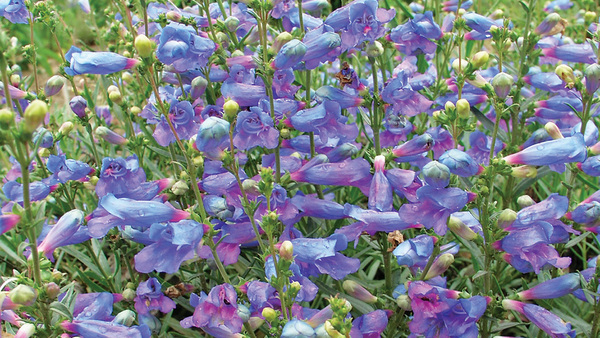
I was first introduced to Mohr’s rosinweed on a botanizing trip to northern Alabama. It’s a true native stalwart and one of the many durable plants in the genus Silphium that are indigenous to prairies, meadows, and grasslands across the United States. These resilient members of the aster family are known to be both beautiful and extremely low maintenance in a garden setting.
Mohr’s rosinweed has a definite architectural quality, with wiry stems that rise from the basal clump of hairy foliage. The daisy-like summer flowers are a soft sulfur yellow and are slightly fragrant. The 2-inch-wide blooms are borne atop stems reaching up to 5 feet tall. As with the many other members of this family, the center part of the blossom makes seeds that are adored by the American goldfinch. The foliage has large, lance-like leaves that are hard to ignore. This species is host to the silphium borer moth (Papaipema silphia), and its nectar supports butterflies, bees, and wasps, which makes it a valuable pollinator plant. It can grow in various soil types, including well-drained, rocky, and sandy, and it can even put up with clay. Once established, this relatively long-lived perennial requires little care to look good. It will also tolerate extreme summer heat and drought-like conditions once established.

Although Mohr’s rosinweed is a taller plant, it can be placed in the middle or at the front of the garden because its bulky foliage is concentrated at the bottom. Because you’re able to look through its tall flowering stems to see the plants behind it, Mohr’s rosinweed has been called a “see-through plant.” It combines particularly well with native grasses, including switchgrasses (Panicum virgatum and cvs., Zones 5–9) and little bluestems (Schizachyrium scoparium and cvs., Zones 3–9). The common name of Mohr’s rosinweed was chosen by American botanist John Small in 1897. It honors Charles Mohr, an Alabama-based pharmacist and botanist whose field studies led to the publication of Plant Life of Alabama after his death.
Mohr’s rosinweed
Silphium mohrii
Zones: 5–8
Conditions: Full sun; well-drained soil
Native range: Southeastern United States
Andrew Bunting is vice president of horticulture at the Pennsylvania Horticulture Society.
Sources
- Digging Dog Nursery, Albion, CA; 707-937-1235; diggingdog.com
- Wood Thrush Natives, Floyd, VA; 215-272-1843; woodthrushnatives.com

















Comments
Log in or create an account to post a comment.
Sign up Log in